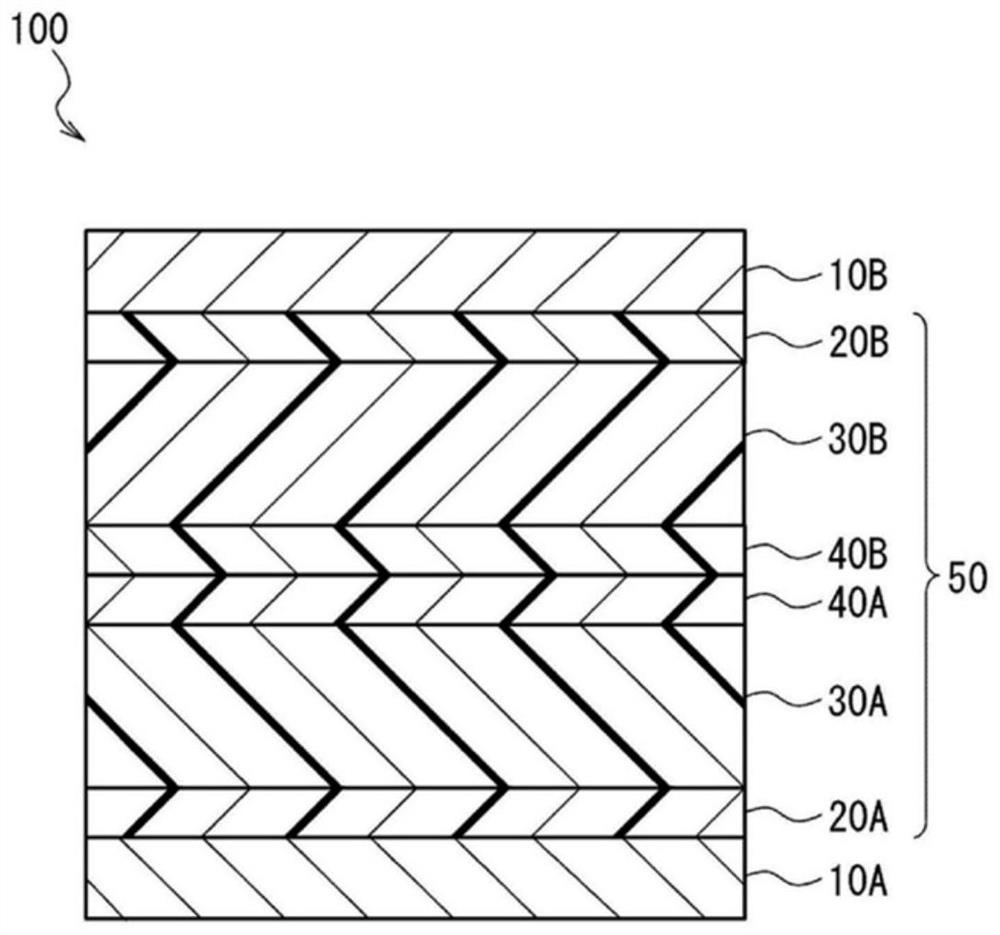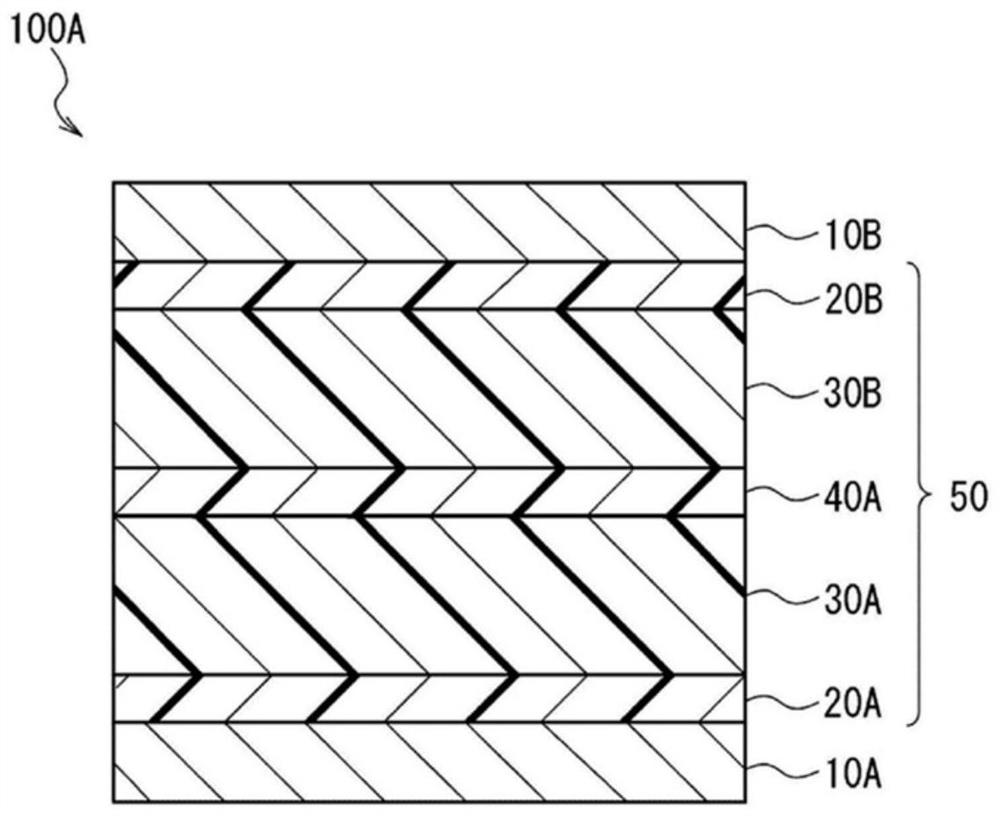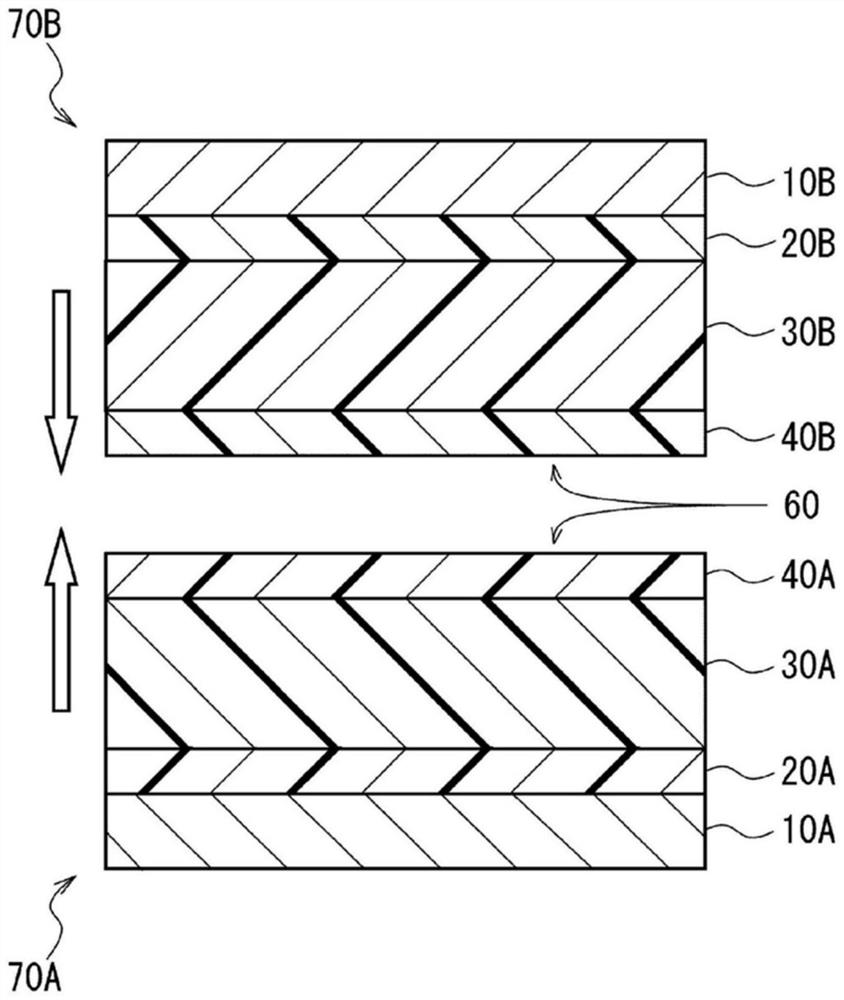Metal-cladded laminate plate, and circuit board
A laminated board and metal-clad technology, applied in the direction of circuit substrate materials, metal layered products, printed circuits, etc.
- Summary
- Abstract
- Description
- Claims
- Application Information
AI Technical Summary
Problems solved by technology
Method used
Image
Examples
Embodiment
[0158] Examples are shown below, and the features of the present invention will be described more specifically. However, the scope of the present invention is not limited to the examples. In addition, in the following examples, unless otherwise specified, various measurements and evaluations used the following.
[0159] [Measurement of viscosity]
[0160] Viscosity was measured using an E-type viscometer (manufactured by Brookfield, trade name: DV-II+Pro), and the viscosity at 25° C. was measured. The rotational speed was set so that the torque became 10% to 90%, and after 2 minutes had elapsed from the start of the measurement, the value when the viscosity was stable was read.
[0161] [Measurement of Glass Transition Temperature (Tg)]
[0162] Regarding the glass transition temperature, using a dynamic viscoelasticity measuring device (DMA: manufactured by UBM Corporation, trade name: E4000F), from 30°C to 400°C, the temperature increase rate is 4°C / min, and the frequency...
Synthetic example 1
[0187] 312 g of DMAc was placed in a reaction vessel equipped with a thermocouple and a stirrer and capable of introducing nitrogen gas. 14.67 g of DAPE (0.073 moles) was stirred in the vessel and dissolved in the reaction vessel. Next, 23.13 g of BTDA (0.072 moles) were added. Thereafter, stirring was continued for 3 hours to prepare a resin solution a of polyamic acid having a solution viscosity of 2,960 mPa·s.
[0188] Next, on one side (Rz: 2.1 μm) of an electrolytic copper foil with a thickness of 12 μm, the polyamic acid resin solution a is uniformly applied so that the thickness after curing becomes about 25 μm, and then removed by heating and drying at 120° C. solvent. Furthermore, stepwise heat treatment is performed from 120° C. to 360° C. within 30 minutes to complete imidization. The copper foil was etched and removed using an aqueous ferric chloride solution to prepare a polyimide film a (thermoplastic, Tg: 283° C., CTE: 53 ppm / K, moisture absorption rate: 1.30% ...
Synthetic example 2
[0190] 312 g of DMAc was placed in a reaction vessel equipped with a thermocouple and a stirrer and capable of introducing nitrogen gas. 6.60 g of spherical fillers (silicon dioxide, average particle size: 1.2 μm, manufactured by ADMATECHS, “SE4050”) were added to the reaction vessel, and dispersed for 3 hours by an ultrasonic disperser. 14.67 g of DAPE (0.073 moles) was stirred in a vessel and dissolved in the solution. Next, 23.13 g of BTDA (0.072 moles) were added. Thereafter, stirring was continued for 3 hours to prepare a polyamic acid resin solution b (silica content: 10% by volume) having a solution viscosity of 3,160 mPa·s.
PUM
| Property | Measurement | Unit |
|---|---|---|
| Thickness | aaaaa | aaaaa |
| Peel strength | aaaaa | aaaaa |
| Thickness | aaaaa | aaaaa |
Abstract
Description
Claims
Application Information
 Login to View More
Login to View More - R&D
- Intellectual Property
- Life Sciences
- Materials
- Tech Scout
- Unparalleled Data Quality
- Higher Quality Content
- 60% Fewer Hallucinations
Browse by: Latest US Patents, China's latest patents, Technical Efficacy Thesaurus, Application Domain, Technology Topic, Popular Technical Reports.
© 2025 PatSnap. All rights reserved.Legal|Privacy policy|Modern Slavery Act Transparency Statement|Sitemap|About US| Contact US: help@patsnap.com



